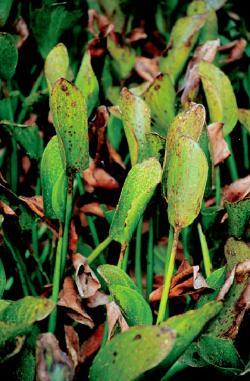Biological Control Considerations
The excessive growth of a weed in its new habitat may be due in part to the absence of natural enemies that normally limit or slow the growth, reproduction and spread of the weed in its native range. Classical biocontrol seeks to reunite an invasive plant with one or more of its coevolved natural enemies to provide selective control of the weed.
Classical biocontrol can be defined as the planned introduction and release of nonnative organisms (usually arthropods, nematodes or plant pathogens) from an invasive plant’s native range to reduce the vigor, reproductive capacity or density of the target weed in its new or introduced range.
Years of research are required by law to be sure the introduced insects or pathogens are “target specific.” It must be proven that they only feed on or attack a specific targeted plant (like the water hyacinth).


